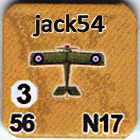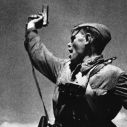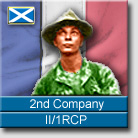kipanderson
Posts: 394
Joined: 8/27/2001
From: U.K.
Status: offline

|
Hi,
I am a fan but there is one area where I think you did drop ball I have mentioned elsewhere but to help I think you wish for all such comments to be posted here.
Shock effect.
I don’t think it is historically accurate and even trying to watch out for it breaks the all-important immersion and natural flow of the game. There seems to be confusion between “operational movement….” and the conduct of the contact battle itself.
Lorried, trucked infantry didn’t manoeuvre in their transport while in close contact with the enemy. They would unload out of harms way, unless something went wrong, and then manoeuvre and fight alongside the tanks in a similar way to pure foot infantry. It is true that if infantry were accustomed to working with armour, typically with the same units married up, they worked far more effectively together. However, this does not mean that the combat power of a tank battalion was “decreased…” by the presents of infantry, even infantry unfamiliar with armour, in the same battalion task force to use more modern jargon.
From all I have read if say a Commonwealth tank battalion and an infantry battalion from an infantry division found themselves teamed up to attack the German line it would happen something like this.
The armoured squadrons/companies and the infantry companies would manoeuvre forward largely independently with the infantry no doubt nervous of avoiding a “blue on blue..” incident. But the armour would still use the infantry to try and identify the detail of the enemy positions by their fire and manoeuvre and the armour would still try to suppress the enemy positions while the many greater eyes of the infantry in turn tried to spot and suppress enemy AT guns. If the units were familiar with each other all this would work far more effectively.
At this scale I have always thought the most effective way to model the interdependence of armour and infantry is to make armour having its full, greater combat power being dependant on having the required amount of infantry working alongside them given the terrain the combat is taking place in.
Examples.
Open desert terrain. For an armour battalion to have its full combat power requires no infantry accompanying it. But if infantry of any sort is involved with it there is no decrease in its combat power.
Light farmland, whatever that is.. . For armour to have its full combat power it must attack with at least one infantry squad for every three tanks or platoon of infantry for a company of armour. . For armour to have its full combat power it must attack with at least one infantry squad for every three tanks or platoon of infantry for a company of armour.
Town. For an armour unit to have its full combat power it must attack with equal numbers/squads/companies of infantry.
In very heavy terrain armoured units combat power would decease even with accompanying infantry.
Anyway.. enough if that. Maybe some sort of optional rule that prevents armoured units from taking a decrease in power from the presents of infantry?
You guys are veterans of this stuff so will understand what I am trying to get at even if you don’t agree.
All the best,
Kip.
PS. Changing the combat power of the armoured units given the infantry they are with, given the terrain over which they fight, better then the brutality of shifting odds.. In my very prejudiced view..
< Message edited by kipanderson -- 5/18/2018 12:50:19 PM >
|
 Printable Version
Printable Version








 . For armour to have its full combat power it must attack with at least one infantry squad for every three tanks or platoon of infantry for a company of armour.
. For armour to have its full combat power it must attack with at least one infantry squad for every three tanks or platoon of infantry for a company of armour. 



 New Messages
New Messages No New Messages
No New Messages Hot Topic w/ New Messages
Hot Topic w/ New Messages Hot Topic w/o New Messages
Hot Topic w/o New Messages Locked w/ New Messages
Locked w/ New Messages Locked w/o New Messages
Locked w/o New Messages Post New Thread
Post New Thread